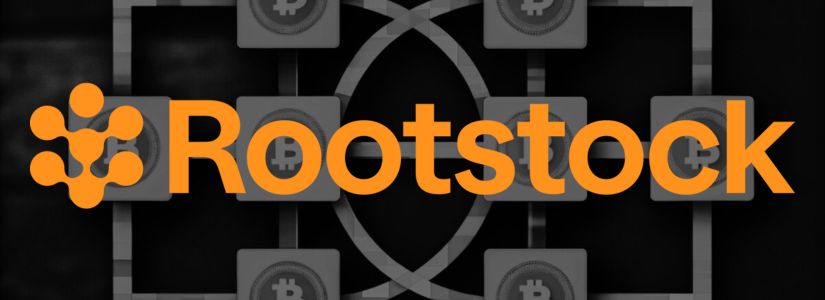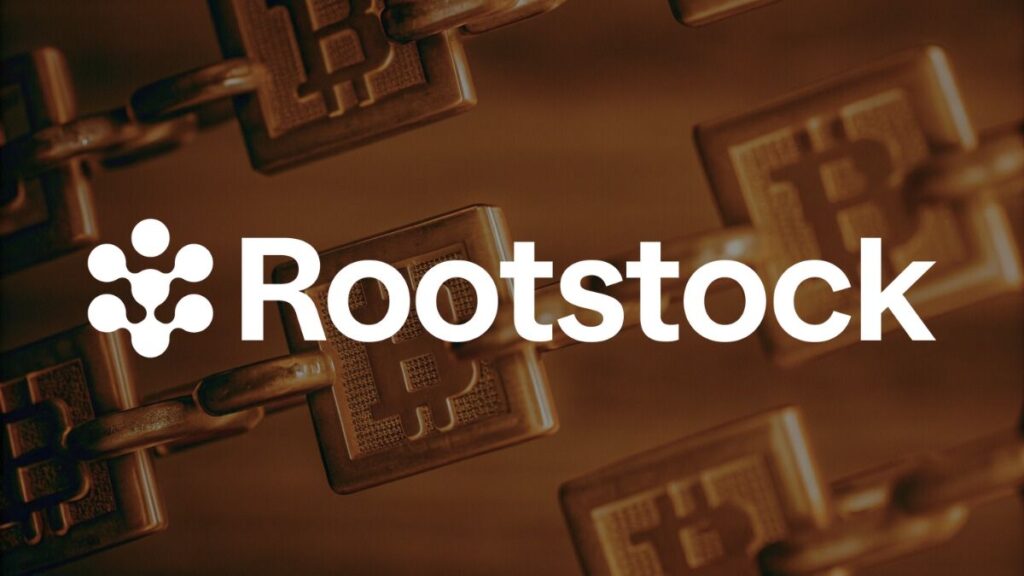Rootstock (RSK) represents a pivotal evolution in blockchain infrastructure, merging Bitcoin‘s battle-tested security with advanced smart contract capabilities. This transformative layer-2 solution extends Bitcoin’s functionality beyond peer-to-peer transactions, enabling decentralized applications and programmable finance while preserving its core cryptographic integrity.
What is Rootstock (RSK)?

Pioneering Bitcoin Smart Contract Ecosystem
Rootstock (RSK) is a significant advancement in Bitcoin’s features, functioning as a smart contract platform that is Turing-complete and secured by Bitcoin’s proof-of-work consensus. Functioning as a federated sidechain, RSK enables dApps, programmable money flows, and complex financial instruments directly anchored to Bitcoin’s blockchain via merge-mining.
This architecture preserves Bitcoin’s unparalleled security while introducing advanced functionality historically exclusive to networks like Ethereum, positioning RSK as a transformative layer for Bitcoin’s DeFi future. Launched in 2015, it addresses Bitcoin’s original smart contract limitations through innovative layer-2 solutions.
Ethereum-Compatible Developer Gateway
A core innovation lies in RSK’s full Ethereum Virtual Machine (EVM) equivalence, allowing seamless deployment of Solidity-based smart contracts. Developers leverage identical tooling (MetaMask, Truffle, Hardhat) to port existing Ethereum dApps to Bitcoin’s ecosystem, unlocking Bitcoin’s $1+ trillion market cap for DeFi.
This interoperability merges Ethereum’s developer network effects with Bitcoin’s battle-tested security, enabling trust-minimized lending protocols, decentralized exchanges, and NFT marketplaces on Bitcoin’s foundation. Over 25+ DeFi protocols like Sovryn leverage this compatibility for Bitcoin-native yield generation.
Smart Bitcoin (RBTC): Native Asset Mechanics
The network’s operations rely on Smart Bitcoin (RBTC), a decentralized 1:1 Bitcoin representation minted via a permissionless two-way peg. Unlike wrapped alternatives (wBTC), RBTC eliminates centralized custodians through a federation of audited, geographically distributed entities.
RBTC pays transaction fees, incentivizes miners, and powers smart contracts, functioning as both a gas token and settlement layer while inheriting Bitcoin’s scarcity and value proposition. RBTC’s circulating supply dynamically mirrors locked Bitcoin reserves through autonomous peg stability mechanisms.
Scalability Solutions and Cross-Chain Synergy
Addressing Bitcoin’s throughput constraints, RSK achieves 400+ TPS via optimized block propagation and 30-second block times, dramatically outpacing Bitcoin’s base layer. Its cross-chain infrastructure integrates bridges to Ethereum, BNB Chain, and Polygon, enabling Bitcoin-backed assets to flow into multi-chain DeFi ecosystems.
RSK’s modular design further supports zk-Rollups for enterprise-scale privacy, cementing its role as Bitcoin’s scalability engine. Real-world adoption includes financial institutions using RSK for compliant asset tokenization and instant settlements.
How Does Rootstock Work?

Two-Way Peg with PowPeg Security
Rootstock employs a trust-minimized bridge called PowPeg to transfer Bitcoin (BTC) between the Bitcoin mainchain and Rootstock sidechain. BTC is locked in a multi-signature vault on Bitcoin’s blockchain, triggering the minting of an equivalent 1:1 pegged RBTC on Rootstock. The reverse operation, known as “peg-out,” involves burning RBTC to unlock BTC.
PowPeg uses Hardware Security Modules (PowHSMs), tamper-proof devices that autonomously sign transactions, eliminating human-controlled keys and preventing fund extraction. An emergency multisig with time-locked withdrawals adds redundancy against hardware failures.
Merged Mining Consensus
Rootstock shares Bitcoin’s Proof-of-Work security through merged mining. Bitcoin miners contribute hash power to validate Rootstock blocks without additional computational overhead. By solving a single cryptographic puzzle, miners simultaneously secure both chains and earn dual rewards: Bitcoin block subsidies + Rootstock transaction fees (80% per block). This leverages Bitcoin’s dominant hashrate (50%+) to protect Rootstock against 51% attacks while incentivizing miner participation.
EVM-Compatible Rootstock Virtual Machine (RVM)
Smart contracts execute on Rootstock’s RVM, a fork of Ethereum’s EVM with near-identical opcode support. Developers deploy Solidity-based dApps unchanged from Ethereum, using tools like MetaMask, Hardhat, and Truffle. Critical technical deviations exist:
- Gas Costs: SLOAD/SSTORE opcodes consume less gas than Ethereum due to unimplemented EIP-2929.
- Checksums: Addresses embed Rootstock’s chain ID (e.g., RSK Mainnet: 30), failing Ethereum checksum validations.
- Estimation Behavior: After upgrading to Post-Arrowhead 6.5.0, eth_estimateGas now reflects Ethereum’s behavior by providing errors for unsuccessful simulations rather than gas estimates.
Cross-Chain Scalability & Settlement
Rootstock processes 400+ TPS via 30-second block times, 200× faster than Bitcoin, using DECOR+ for fair miner reward distribution during orphaned blocks. Transactions settle on Bitcoin’s base layer after batched verification. Cross-chain bridges (e.g., RSK-ETH, RSK-BSC) enable RBTC and tokenized assets (stablecoins, wrapped BTC) to flow into Ethereum, Polygon, or BNB Chain ecosystems. The Lumino Network further enables instant off-chain payments compatible with Bitcoin’s Lightning Network.
What is the RBTC Token?

Native Gas and Utility Token of Rootstock
RBTC (Smart Bitcoin) serves as the foundational cryptocurrency within the Rootstock ecosystem, functioning as the exclusive medium for paying transaction fees (“gas”) and settling smart contract operations. It represents a decentralized, 1:1 Bitcoin equivalent on Rootstock’s blockchain, merging Bitcoin’s robust monetary policy with smart contract programmability. Unlike wrapped tokens, RBTC eliminates centralized custodians, inheriting Bitcoin’s scarcity while enabling complex DeFi interactions.
Decentralized Two-Way Peg Mechanism
RBTC tokens are minted when Bitcoin is securely locked in a multi-signature address managed by a federation of independent, audited entities. This federation uses Hardware Security Modules (HSMs) to autonomously sign transactions, eliminating single points of failure. The reverse process, burning RBTC, unlocks the original Bitcoin after cryptographic verification.
This mechanism maintains a strict 1:1 peg without relying on centralized custodians or third-party attestations, differing fundamentally from synthetic assets.
Core Utility in Rootstock’s DeFi Ecosystem
Within Rootstock’s decentralized finance infrastructure, RBTC powers:
- Lending Protocols: Collateral for loans (e.g., Sovryn’s zero-interest stablecoin borrowing).
- Liquidity Pools: Base currency for trading pairs (e.g., RBTC/DOC stablecoin).
- Governance: Voting weight in DAO proposals for network upgrades.
- Staking Rewards: Yield generation via validator incentives.
- Its role as the default settlement asset ensures seamless interoperability with Bitcoin-native financial products.
Programmable Scarcity and Bitcoin Alignment
RBTC’s supply is algorithmically governed by Bitcoin’s 21 million cap, with circulating tokens dynamically adjusting to locked BTC reserves. On-chain audits via Merkle tree proofs publicly verify reserve adequacy. RBTC transactions leverage Bitcoin’s security through merge-mining finality, while enabling features Bitcoin lacks: sub-30-second settlements, micropayments, and composable DeFi logic, all without diluting Bitcoin’s core value proposition.
Conclusion
Rootstock pioneers Bitcoin’s evolution into programmable finance, merging its unparalleled security with Ethereum-scale functionality. While technical innovations like merge-mining and EVM equivalence enable transformative DeFi applications, RBTC’s decentralized peg mechanics ensure Bitcoin-native value preservation. For developers and institutions alike, RSK represents blockchain’s next evolutionary phase, bridging decades of stability with composable innovation.










